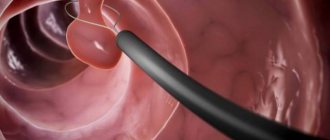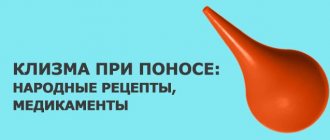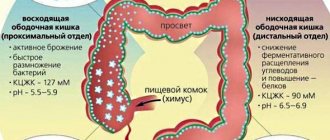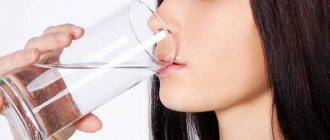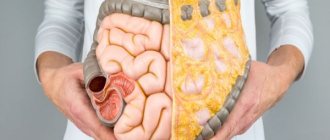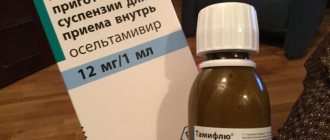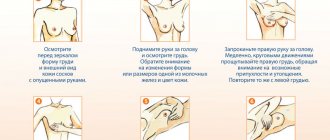What is the stomach for a person?
The human stomach is an organ consisting of muscle tissue, hollow inside. It is one of the important parts of the digestive system. This organ is located between the esophagus and the duodenum. The volume of an empty adult organ is approximately half a liter. After eating, the volume increases to 1 liter, and if normal portions are exceeded - to 3.5-4 liters.
Gastric lavage, the technique (algorithm) of which will be described in this article, may be necessary if the organ perceives the incoming food as a danger. In this case, the food bolus lingers in the gastric reservoir without moving into the intestines, where the absorption of dangerous substances into the blood will increase. Nausea, vomiting, and pain appear.
Characteristics of the method
Baking soda in case of acid poisoning leads to the release of carbon dioxide, which greatly expands, hurts and bleeds the stomach.
Tube gastric lavage is more effective, avoids such conditions and reduces mortality among victims. It is advisable to use it in the first 0.5-1 hour from the moment of poisoning. At a later date, the method is also effective, since the toxicant in the form of tablets can remain in the gastric folds for 24 hours. Refusal of the procedure due to the length of time from the moment of poisoning is unlawful, since toxic substances were found at autopsy even 2-3 days after taking the poison.
Severe cases of intoxication with drugs, as well as organic poisons and chlorine-containing hydrocarbons, require repeated gastric lavage due to the re-entry of the toxin from the intestines into the stomach.
When the stomach is washed
There are many indications for gastric lavage:
- Consumption of spoiled foods or poisonous mushrooms, leading to acute food poisoning.
- Intoxication of the body as a result of exceeding the permissible doses of alcohol.
- Poisoning with chemicals, toxic substances, household chemicals, medicines.
- Problems with intestinal patency.
- Atony of the muscle tissue of the stomach walls.
- Binge eating.
- Treatment of diseases of the gastrointestinal tract and other organ systems.
The main flow of toxins is absorbed into the blood during the first 2 hours after poisoning. This means that it is advisable to cleanse the stomach after the first symptoms of intoxication appear.
Contraindications
There are a number of conditions that make gastric lavage impossible. The technique (algorithm) of the procedure does not play a role in this case, since the procedure is generally contraindicated. These conditions include:
- Internal bleeding.
- Receiving acid or alkaline burns of the larynx or gastrointestinal tract.
- Problems with cerebral circulation.
- Loss of consciousness.
- Impaired reflexes, convulsions.
- Organic narrowing in the esophagus.
- Heart rate instability, myocardial infarction, angina pectoris.
In difficult cases, any manipulations with the patient are carried out only after stabilization of his condition.
Do-it-yourself gastric lavage at home
Understanding how to rinse the stomach at home can significantly improve the condition of food or alcohol poisoning. The victim should drink plenty of water and induce a gag reflex. A little preparation for the manipulation is carried out beforehand. Make a rinsing solution and place a container (basin or bucket) nearby for the contents of the stomach. Now you can perform gastric lavage in case of poisoning.
In total, you will have to drink 5 liters of liquid in small portions. Drink 2 glasses at one time, after which the gag reflex should work. If it does not work, then it is stimulated by pressure on the root of the tongue. This can be done with a swab, a medical spatula, or simply by putting your fingers in your mouth. It is important not to try to drink all the liquid at once. You will have to cleanse your stomach many times, otherwise you will not be able to achieve the desired effect.
The same method is used in the hospital if the patient for some reason is unable to swallow the tube. An important detail is the large and repeated amount of liquid entering the stomach; simply inducing vomiting by putting your fingers in your mouth is not enough. In some cases, for example, when the victim drank a strong acid or alkaline solution, it is impossible to induce vomiting, since the esophagus will be re-burned. Washing is only permissible through a probe.
Carrying out the procedure
There is a probeless (“restaurant”) and probe method. The first method is suitable for food poisoning not caused by cauterizing poisons. Flushing technique: Give the child a glass of water or saline solution and induce vomiting by pressing on the tongue.
The probe method is used for oral consumption of low-quality food and chemicals. To carry out the procedure, a medical instrument in the form of a flexible rod is used. Lavage helps cleanse the stomach of harmful substances. Before performing the procedure, you need to study the specifics of its implementation, since there is a risk of damage to the mucous membrane and the development of asphyxia.
Probe method
Gastric lavage algorithm:
- Place a towel on the baby's chest. Tilt your head back and open the baby's mouth. It is not recommended to place the baby on his stomach.
- Place the end of the medical instrument on the tongue and ask the child to swallow. Begin careful advancement of the probe.
- Insert the tool up to the mark made by the marker.
- Attach the Janet syringe to the probe. Add the required amount of water or saline solution.
- Disconnect the Janet syringe. Do not remove the funnel. Place the end of the probe into a container for washing water and wait for the stomach contents to flow out.
- Repeat the manipulation. Rinse the stomach until the fluid that flows out is clear.
- Complete the procedure by removing the probe. Provide the patient with rest.
Syringe Janet
At an early age, children should be held by an adult during gastric lavage. Children under 3 years of age are allowed to be placed on their side, with their face slightly turned down.
When a gastric tube is inserted, the patient's condition may deteriorate sharply. If gagging occurs, stop inserting the instrument and allow the child to catch his breath. After normalization of the condition, the manipulation is continued.
It is not recommended to perform the procedure on your own for an infant. When gastric lavage occurs in a newborn, the instrument is inserted through the nose.
Attention! During the procedure, the child may cough and turn blue in the face. If such symptoms appear, you need to remove the gastric tube, as they indicate that a medical instrument has entered the respiratory tract: the larynx or trachea. Ignoring these symptoms can lead to the development of asphyxia.
Wash solutions
You can rinse your stomach with regular boiled water, but it is better to make a special solution for this purpose. Proper preparation will increase the effectiveness of the procedure. The liquid for gastric lavage should be lukewarm. The optimal temperature is 25-28 °C. A hotter solution will increase the rate of penetration of toxins through the dilated vessels. The cold solution may cause spasms.
The following compositions can be used for rinsing:
- Weak saline solution. Dissolve 2 tablespoons of salt in 5 liters of warm water. This composition enhances the contraction of the sphincter, preventing the penetration of toxins into the intestines.
- Pink solution of potassium permanganate. The solution should be light, slightly pinkish in color. Before use, it is filtered to avoid the ingress of undissolved particles. The composition has antiseptic and antimicrobial properties.
- Baking soda solution. In this case, take 2 full spoons of soda for 5 liters of boiled water.
It is not at all difficult to prepare these compositions for rinsing, and if a person knows how to rinse the stomach at home, then it is advisable to do this before the ambulance arrives. The sooner help is provided, the faster the patient will recover. Therefore, if it is possible to perform the stomach cleansing procedure yourself, you need to use this chance.
Preparing to wash the organ
The child should be told the rules of behavior during the procedure:
- It is forbidden to pull out the gastric tube or squeeze it with your teeth;
- swallowing should be gradual;
- you need to inhale air through your nose.
Petrolatum
Washing steps:
- Prepare the required volume of medicinal fluid.
- Pick up a probe. Moisten the blind end or treat it with Vaseline.
- Prepare a clean towel and container for the water coming out of the stomach.
- Measure the distance from the incisors to the navel using a silk thread. The resulting length is the depth to which the gastric tube must be inserted. Attach the thread to the tool and make a mark with a marker.
- Prepare a funnel into which the liquid will be poured, or a Janet syringe.
Self-preparation of the solution
On an outpatient basis, the stomach is washed with a medicinal liquid, which is prepared from 5 liters of water and 2 tbsp. spoons of salt. When ingested, NaCl slows down the absorption of toxic components.
The recommended liquid temperature is 35.5–37 degrees. Hot water injures the mucous membrane, provokes dilation of blood vessels and accelerates the absorption of toxic substances into the blood, while cold water causes spasm of the muscles of the internal organ.
Medications
For a small child, you can rinse the stomach with saline, a sterile liquid made from water for injection and salt. You can purchase the product in pharmacies without providing a prescription from a doctor.
Activated carbon is useful for poisoning. The medication should be given to the child after clearing the stomach of the elements that caused the poisoning.
Important! Activated carbon prevents the absorption of toxins and promotes the removal of harmful substances from the body.
Preparing the required volume of liquid
The amount of the product depends on the age of the patient. Volume of liquid required for the procedure:
| Patient age | For complete rinsing | For immediate administration |
| Newborn | 200 ml | 15 ml |
| 1–2 months | 300 ml | From 60 to 90 ml |
| 3–4 months | 500 ml | From 90 to 100 ml |
| 5–6 months | Less than 1 l | From 100 to 110 ml |
| 7–8 months | From 110 to 120 ml | From 110 to 120 ml |
| 9–12 months | 1 l | From 120 to 150 ml |
| 2–3 years | From 2 to 3 l | From 200 to 250 ml |
| 4–5 years | From 3 to 5 l | From 300 to 350 ml |
| 6–7 years | From 6 to 7 l | From 350 to 400 ml |
| 8–11 years | From 7 to 8 l | From 400 to 450 ml |
| 12–15 years | From 450 to 500 ml | From 450 to 500 ml |
Probe selection
Gastric tube with a diameter of 6 mm
When cleansing the stomach of toxic substances, a special medical instrument with a flexible rod is used. When purchasing a probe, you need to choose the right tube diameter, which depends on the child’s age:
- Up to 1 month - 2–3 mm.
- At 1–3 months – 3–4 mm.
- Up to 3 years - 5 mm.
- At 4–6 years old - 10 mm.
- From 6 years - 10–15 mm.
Gastric lavage in a medical facility. Thick probe
Only qualified personnel should insert a gastric tube for lavage. A thick probe is a rubber tube, the length of which is about 120 cm, and the diameter is 1 cm. The device is inserted through the oral cavity and esophagus into the stomach, then a funnel is attached to the free end and liquid is poured in. The amount of rinsing solution is calculated based on the patient's weight. 5-7 ml of liquid is administered once per kilogram of weight.
While infusing the liquid, the physician holds the funnel above the face, and when the solution reaches the mouth of the funnel, lowers it into a container for rinsing. The manipulation is repeated until clean water is obtained. The contents of the first portion of washing are sent for research.
Thin probe
The thin probe has 2 varieties: for insertion through the mouth and for insertion through the nose. This rinsing tool is often used in cases of poisoning in children. For babies under 4 months of age, rinsing is done only with a thin probe through the nose. The solution is injected with a special Janet syringe.
When the probe is inserted through the nose, the patient can talk. The main thing is to make sure that the probe gets into the stomach and not into the larynx.
Basic mistakes
Both at home and in hospital, gastric lavage, the technique (algorithm) of which is as simple as possible, can be carried out with the following errors:
- The victim is given a large volume of liquid once, which leads to the opening of the inlet sphincter of the stomach and the penetration of toxins into the duodenum.
- The amount of injected and withdrawn solution is not controlled.
- The compositions for washing were prepared incorrectly. The solutions are more concentrated than acceptable, the potassium permanganate is not filtered, and the temperature is not normal.
These errors can worsen the patient's condition, so the procedure must be treated responsibly.
In a dangerous situation, it is important not to panic, but to act confidently and quickly. If necessary, an adult should begin gastric lavage at home, even before the doctors arrive. It is advisable to take a small child to the hospital as quickly as possible; children under one year old cannot be washed at home.
Algorithm of actions
A gastric lavage tube is administered to adults according to the following algorithm:
- The rinsing is carried out by a doctor together with a nurse.
- The patient is seated on a chair or placed on the right side.
- A thick tube is inserted into the oral cavity.
- A funnel is attached to the opposite end of the tube and lowered to the stomach.
- Then liquid and vomit begin to flow into the funnel, which are discharged into a basin or other container.
- The first portion of the masses is sent for research.
- At the next stage, continue to pour out the contents until a clear liquid appears.
- Typically this procedure requires approximately 10-20 liters. water.
- After this, enterosorbing substances and laxatives are administered in a similar way.
- At the final stage, the funnel is disconnected and the tube is removed.
When carrying out cleansing measures, complications are possible in the form of mechanical damage to the walls of the larynx, stomach and esophagus, and penetration of the solution into the organs of the respiratory system.
In case of complications, pulmonary resuscitation is performed: the head is tilted back, artificial respiration is performed, during which the nasal slits are necessarily clamped. An indirect cardiac massage is performed, the arms are crossed with the back side down, and light pressure is applied. Number of repetitions – 60. In case of severe consequences, the patient is placed in the intensive care ward.
Reviews from patients indicate the effectiveness of the probe technique in case of poisoning. It is important to remember - the sooner urgent measures are taken, the better the chances of a speedy recovery.
Gastric lavage is one of the most common methods of treating acute food or chemical poisoning; at home, you can use the method without a tube, but if a person has a serious condition, only the tube method can help (it is better to do it in a hospital, under the supervision of medical staff). A correctly performed procedure helps remove toxic substances (even poisons) from the body, improves the patient’s condition and promotes rapid recovery. In some cases, timely help can save lives.



